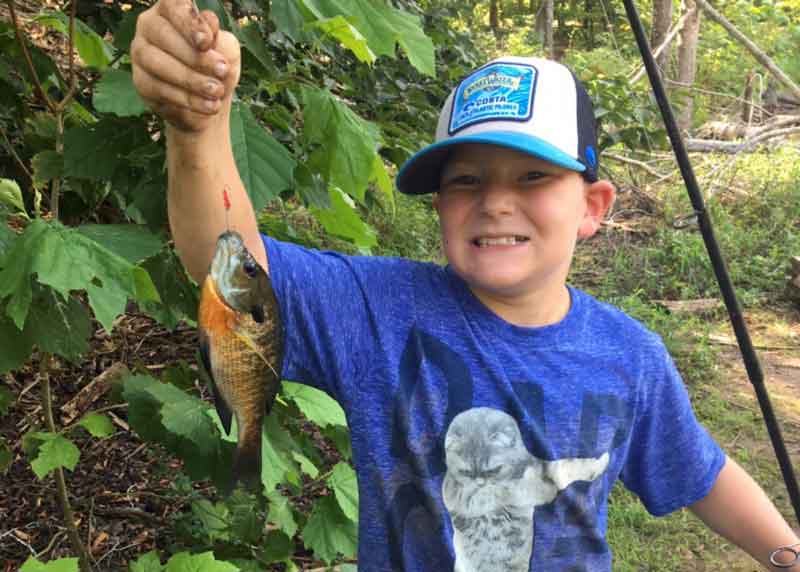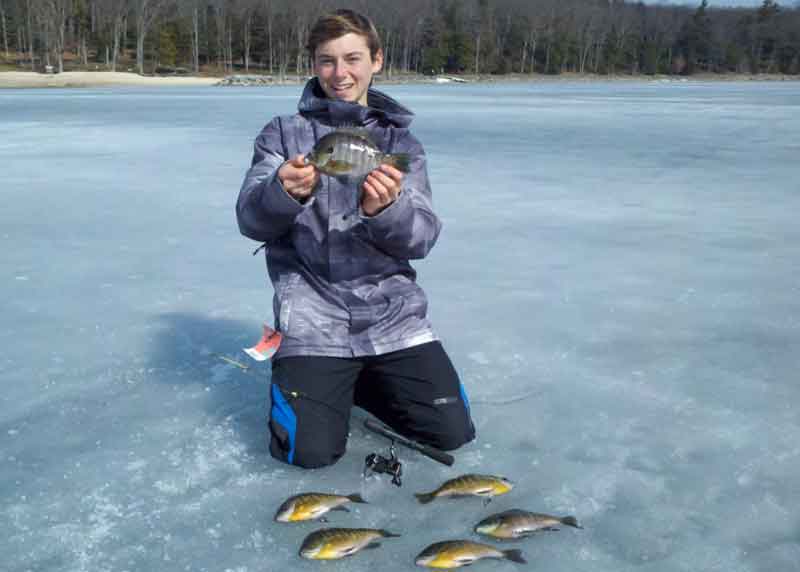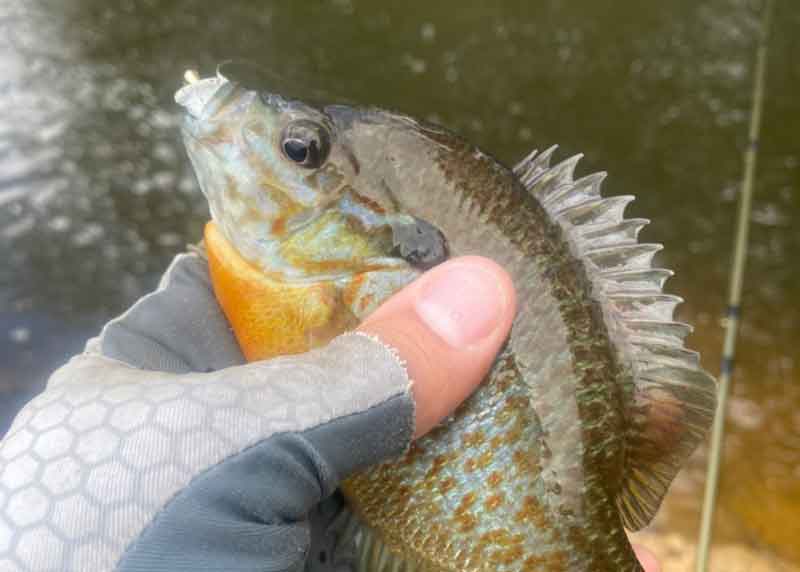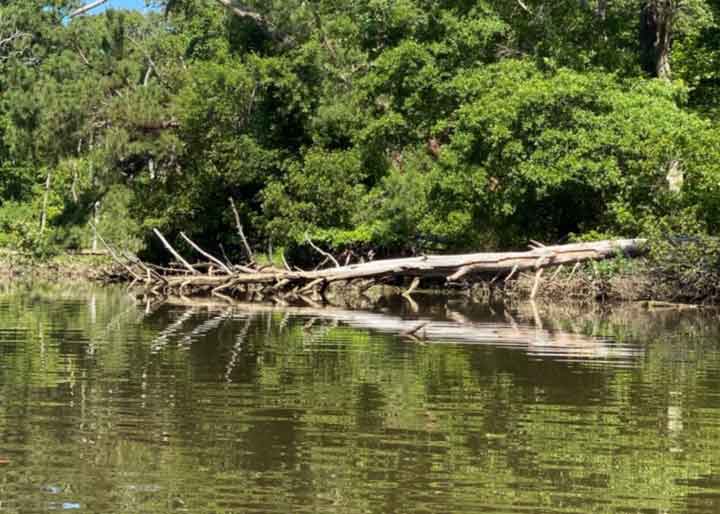Bluegills are a popular recreational fish for beginner fishermen and are primarily concentrated throughout freshwater bodies of water, and in fresh areas of tributaries to the Chesapeake Bay. They prefer quiet and calm waters including ponds, lakes and streams. As a result, these fish can be found in large numbers by shoreline anglers as well as those on kayaks, canoes, and other small watercraft. They’re a type of sunfish, and may also be called sunfish, bream, or sunnys. Since they're usually present in large numbers and almost always bite, they're a top target for anglers new to the sport.

Bluegill, members of the Centrarchidae family, are around six to 12 inches in length and are concentrated in water with salinity less than 18 ppt. While they are commonly found throughout the Chesapeake Bay tributaries, bluegill are most common in lakes and ponds throughout the region, making them a popular beginner fish that fishermen of any skill level can catch.
They spawn in the warmer months of the year, from April to September. Female bluegills lay their eggs in nests built by male bluegills, who then protect the eggs and the newly-hatched fish. Bluegills feed on both aquatic insects and small fish.
Bluegill Identification
Bluegill can be identified by the following characteristics:
- Small mouth and oval shaped body
- Dark green on top portion of body and dark yellow near the belly of the fish
- Dark spot at base of dorsal fin
- Dark blue and black “ear”
Bluegill Regulations
States throughout the region have different regulations in place for the length and bag limit of bluegill.
- Maryland does not have a size limit and the fishing season is open year-round. The daily bag limit of 15 in aggregate possession.
- Virginia follows the same rules as Maryland and holds no size limit and the fishing season is open year-round. The state limits the amount of fish per day to 50 in aggregate possession.
- Delaware abides by similar regulations, does not have a size limit, and the season is open year-round. They set the limit per day to 25 bluegill.
Record Bluegill
Maryland’s state record for bluegill is a three pound and seven ounce fish, caught at Deep Creek Lake in August of 1998 by Sarah Brenneman. Meanwhile, Virginia’s state record tops Maryland’s by over a pound as it comes in at four pounds and eight ounces, caught at a private pond in February of 1970 by Thomas Jones. While Delaware’s state record also tops Maryland’s, it is still below Virginia’s as it weighed in at three pounds and 10 ounces, caught at Diamond Pond in April of 2001 by Clifford Snyder.
Best Baits for Bluegill
Fishermen throughout the region have had the best luck catching bluegill with:
- Crickets
- Nightcrawlers
- Red worms
- Waxworms
- Mealworms
Popular Techniques for Bluegill Fishing
Bluegills are often great fish for beginner fishermen as they are not overly complicated to catch. Suspending small baits under a bobber, fishing with flies, or casting and retrieving tiny spinners or jigs are all effective. Threading a small bit of worm onto a hook is about as simple as fishing gets, and with bluegills, it works perfectly fine.

Bluegill Fishing Tackle
With these small fish, small gear is usually appropriate. Therefore, many fishermen suggest two- to four-pound test line, number six or eight hooks, and for jigs, “micro” jig heads in the range of 1/32 to 1/16 of an ounce. Fishermen also find great success with a fly rod with a four- to five-weight rating and two-pound tippet.

Best Places to Fish for Bluegill
Oftentimes many fishermen agree that remote ponds and lightly fished bodies of water are the best place to cast a lure for bluegill. They prefer slow-moving freshwater habitats such as lakes, ponds, and holes in rivers. Bluegill can best be found closer to shore near structure. The bluegill prefer habitat with covering, therefore they can be found where there are lily pads, trees, docks, or other shade-providing items. During the warm days in the summer months, bluegill will often be in greater depths of water or in the shade and are not nearly as active. However, even at the height of summer they feed during dawn and dusk and are extremely active during these times.

Whether you’re taking your kid out fishing for the first time or you’re going out for a relaxing night alone, bluegill fishing will not disappoint. Check out the latest freshwater fishing reports to keep up on the latest fishing news, and remember that bluegill are almost always a sure-fire option for fishing success.
-Devon Garner